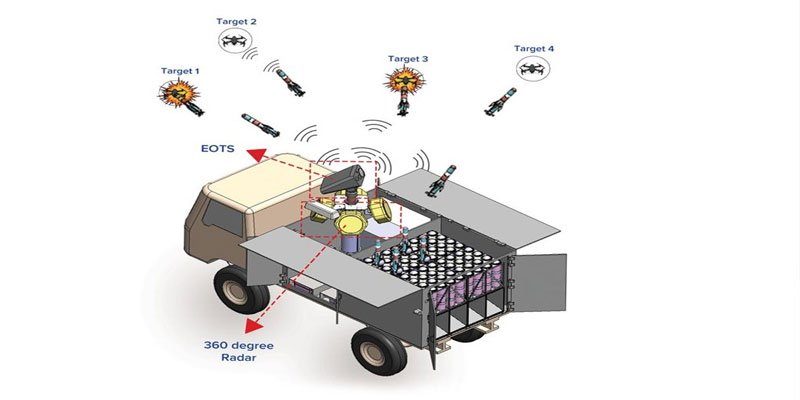ISRO and India’s Pioneering Space Journey
India’s space program, spearheaded by the Indian Space Research Organisation (ISRO), has been a beacon of innovation, propelling the nation to the forefront of global space exploration. From the success of the Chandrayaan missions to the remarkable feat of the Mars Orbiter Mission, ISRO has consistently showcased India’s technological prowess. However, the upcoming launch of the GSAT-N2 satellite, a vital component of India’s communication infrastructure, is not being carried out by ISRO but by Elon Musk’s SpaceX. This shift raises questions about the decision and its implications for India’s space ambitions.
The GSAT-N2 Satellite and Its Mission
The GSAT-N2 is a cutting-edge Ka-band high-throughput communication satellite developed by New Space India Ltd (NSIL), ISRO’s commercial arm. With a weight of 4,700 kilograms, it is India’s most advanced satellite, designed to enhance broadband internet connectivity across the country, including remote areas such as the Andaman and Nicobar Islands and the Northeast.
The satellite will use 32 beams to provide pan-India coverage, supporting the government’s Smart City initiatives and enabling in-flight internet services. With a mission lifespan of 14 years, the GSAT-N2 is a game-changer for digital communication and connectivity in India.
Scheduled for launch on November 19, 2024, the GSAT-N2 will be propelled into orbit from Cape Canaveral, Florida, aboard SpaceX’s Falcon 9 rocket.
Why SpaceX and Not ISRO?
The choice of SpaceX over ISRO’s LVM3 (Launch Vehicle Mark-III), affectionately called “Bahubali,” stems from the satellite’s weight and the payload limitations of India’s current rockets.
1.Payload Limitations of LVM3
ISRO’s LVM3 can carry up to 4 tonnes into geosynchronous transfer orbit (GTO), making it insufficient for the 4.7-tonne GSAT-N2. SpaceX’s Falcon 9, with a capacity of 8 tonnes to GTO, offers a more suitable alternative.
2.Global Launch Constraints
Historically, ISRO has used France’s Arianespace for launching heavy satellites. However, Arianespace retired its Ariane-5 rocket last year, and slots for the newer Ariane-6 are fully booked. Russia, embroiled in the Ukraine war, is unavailable, and India does not use Chinese commercial services for strategic reasons.
3.SpaceX as the Viable Choice
With its proven reliability and competitive pricing, SpaceX emerged as the best option. The NSIL paid ₹500 crore for the Falcon 9 launch, marking its first collaboration with SpaceX.
Implications for ISRO and India’s Space Program
The reliance on SpaceX highlights the growing importance of international collaboration in space technology but also underscores the limitations of ISRO’s existing launch capabilities.
Push for the Next-Generation Launch Vehicle (NGLV)
Recognizing the need for advanced payload capabilities, ISRO is developing the Next-Generation Launch Vehicle (NGLV) with a budget of ₹8,240 crore. The NGLV promises triple the payload capacity of the LVM3, capable of carrying 30 tonnes to low Earth orbit (LEO) and 10 tonnes to GTO. With a reusable first stage, the NGLV aims to make ISRO more competitive in the global satellite launch market.
Strengthening Commercial Space Ventures
The NSIL’s focus on commercializing satellite operations, as evidenced by the GSAT-N2 and the earlier GSAT-24 launch, demonstrates India’s commitment to integrating private players into its space ecosystem. Eighty percent of the GSAT-N2’s capacity has already been sold to private entities, showcasing the satellite’s commercial viability.
Broader Trends in India’s Space Strategy
India’s collaboration with SpaceX reflects a pragmatic approach to addressing immediate technological gaps while planning for long-term self-reliance. The decision aligns with global trends where space agencies increasingly partner with private firms for cost-effective and efficient missions.
ISRO’s focus on developing indigenous capabilities, such as the NGLV and reusable rocket technologies, ensures that India will not only remain a significant player but also a leader in the rapidly evolving space industry.
A Pragmatic Step Toward Greater Heights
The launch of GSAT-N2 by SpaceX is a practical response to the challenges of payload limitations and global launch constraints. While it highlights current gaps in ISRO’s heavy-lift capabilities, it also underlines India’s adaptive and forward-looking approach to space exploration.
By leveraging international expertise while developing next-generation technologies like the NGLV, India is positioning itself for a stronger, more self-reliant future in space. The GSAT-N2 mission, though launched aboard a foreign rocket, is a testament to India’s ambition and ingenuity in pushing the boundaries of space technology. As ISRO continues to innovate, the nation’s space journey promises to reach even greater heights.
(With inputs from agencies)





